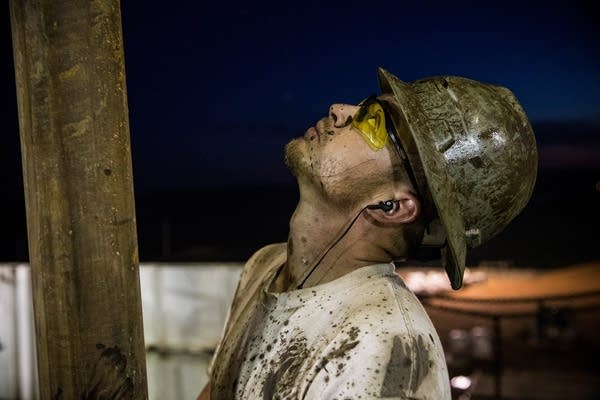'Oil To Die For' explores deaths in the North Dakota oil fields

Go Deeper.
Create an account or log in to save stories.
Like this?
Thanks for liking this story! We have added it to a list of your favorite stories.
Dustin Bergsing was 21 years old when he was overcome by noxious fumes while working the overnight shift at a North Dakota oil well site. He was found dead just after midnight on Jan. 7, 2012.
For oil field workers, this is an all too familiar story. And for Todd Melby, the reporter and producer of "Black Gold Boom: How Oil Changed North Dakota, it was one he couldn't ignore.
More than 50 men have died in the North Dakota oil fields since 2008, Melby said, and each time the newspaper reports follow the same short format: name, age, cause of death. After a year of reading these notices while producing "Black Gold Boom," Melby decided to investigate further.
His new interactive documentary, "Oil To Die For," explores how North Dakota became the most dangerous place to work in the country. "The fatality rates are nearly seven times as high as fields in the rest of America," said Melby.
Turn Up Your Support
MPR News helps you turn down the noise and build shared understanding. Turn up your support for this public resource and keep trusted journalism accessible to all.
In the documentary's interactive format, users can watch interviews, access court documents and move through the story at their own speed. The project shows the human toll of the oil boom.
"When people criticize fracking and the oil industry, they focus on the environmental hazards, and there are lots of those," said Melby. "But people aren't really focusing on those human stories. There are men who are dying at alarming rates in North Dakota and that deserves to be paid attention to. Those lives are important."
"Oil To Die For" premieres Monday.
https://vimeo.com/123640172
Dear reader,
The trustworthy and factual news you find here at MPR News relies on the generosity of readers like you.
Your donation ensures that our journalism remains available to all, connecting communities and facilitating better conversations for everyone.
Will you make a gift today to help keep this trusted new source accessible to all?



